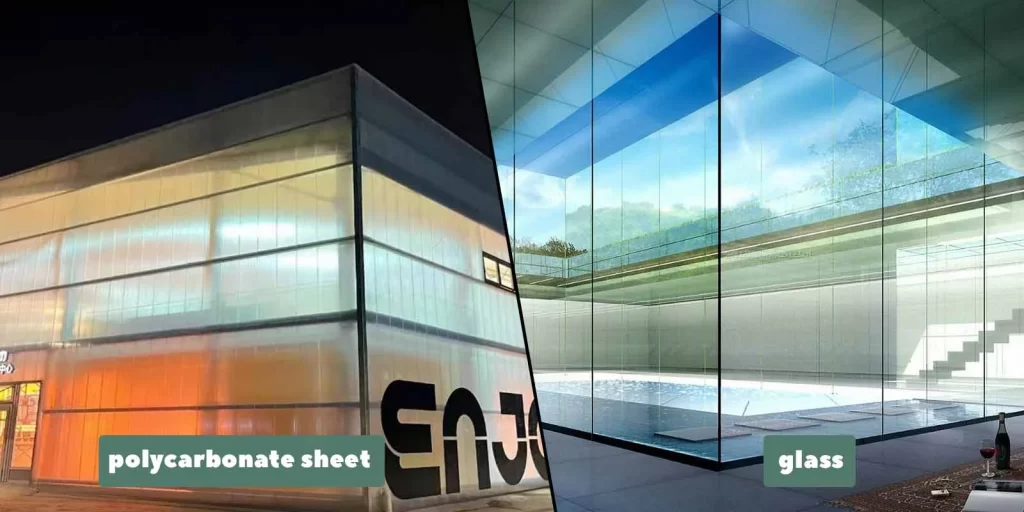
The advancement of technology has allowed the creation of cost-effective materials with great versatility to be used in numerous ways. Some of these materials are glass and polycarbonate sheets, which can be used to construct visually similar architectural elements that give light to spaces.
However, both have respective qualities that make them unique and better suited to some uses than others. For that reason, it is necessary to know the differences between glass and polycarbonate to choose the best option according to the use that will be given to the material.
Discover in detail these materials to choose the best option for you!
Comparison of polycarbonate sheet and glass
Several factors and the application’s requirements must be considered when choosing between polycarbonate sheets and glass. Below, we will mention the differences of some critical components.
- Durability
Polycarbonate is characterized by high impact resistance, making it ideal for various applications in installations with a risk of breakage or high-impact forces. Glass, on the other hand, is more brittle and susceptible to breakage under certain conditions. Although glass is tempered, its strength is also nowhere near that of polycarbonate, which is 200 times more impact-resistant.
Based on the above reasons, polycarbonate is the best choice in cases where the application involves potential impacts or requires high durability such as roofing sheet, greenhouse sheet, highway sound insulation board, flame retardant sheet.
- Density
Polycarbonate is considerably lighter than glass. The density of polycarbonate is 1.20 g/cm3, and that of traditional glass is 2.5 g/cm3, almost double that of polycarbonate sheets.
It would help if you considered that the weight of the materials significantly impacts the carbon footprint caused by vehicles or machines. Therefore, if your goal is to help the environment, it is best to choose a material with low energy consumption and low density, such as polycarbonate.
- Light transmission
Glass has slightly better optical properties than polycarbonate. However, the difference between the two materials is minimal since the minimum light transmission of glass is 88%, and that of polycarbonate is 87%.
- Temperature resistance
The operating temperature of glass can be raised to a maximum of 200 °C, which is considerably higher than that of polycarbonate, which is 120 °C. In addition, the glass transition temperature of polycarbonate sheet is 148 °C, so the material gradually softens above this figure.
Due to the above, glass is the most recommended option if an application requires higher temperature resistance. However, this material is a poor thermal conductor, and rapid temperature changes can cause stress fractures and cracks. On the other hand, polycarbonate has an excellent resistance to low temperatures since it can withstand temperatures as low as -50 °C.
- Chemical resistance
Glass has considerably better chemical resistance than plastics in general. Polycarbonate, on the other hand, because it does not have a coating agent, cannot resist strong acids and weak alkaline substances that can affect the surface. However, it can have a hard coating that significantly improves the properties of polycarbonate, making it a durable solution.
Due to the above, polycarbonate is the most suitable material if you are looking for a transparent material with excellent impact resistance, low weight, and high light transmission.
Conclusion
The properties of polycarbonate panels, especially their high strength and low weight, are increasingly being used as a substitute for glass. Therefore, if you want a solution that resists well outdoors and covers large surfaces, solid polycarbonate sheet roofing over glass is the best option.
If you are interested in obtaining polycarbonate solutions to increase the value of your property, contact us for a customized quote. Our experts are extensively trained to install polycarbonate sheets for your project.
Request polycarbonate sheet service at Foshan Songxia New Material!
